10 beautiful sights not to miss in Alfama Lisbon (plus tips from a local!)
Alfama is the oldest neighbourhood in Lisbon, and between the colourful houses and tiny alleys, there are many sights to discover. It is the perfect location to get lost and enjoy its unique atmosphere. Alfama is not to be missed when you visit the Portuguese capital! The Alfama district is my local area, so I will gladly share some insider information with you when you travel!


An Overview of Alfama Lisbon
Discover Portugal is fully reader-supported. For that reason, this article contains some affiliate links. I may earn a small commission when you purchase through links on this page at no additional cost to you. All revenue is used to keep this website free and updated. I only recommend products or services that I would use myself. You’ll be able to read the full disclaimer here. Thanks for your support!
A short history of the Alfama district
Alfama lies between the Tagus River and the steep slopes that lead toward São Jorge Castle. It houses many traditional places and the famous tram 28 rides through the narrow streets. The name comes from ‘al-ḥamma ‘, the Arabic word for hot fountains or hot baths. Within the district, you’ll discover the streets of the parishes (freguesias) São Vicente de Fora, São Miguel and São Miguel.


During the 1755 earthquake, Alfama wasn’t severely damaged thanks to the dense bedrock foundations, and the district remained a labyrinth of tiny streets. So leave your map at home and discover this fabulous district’s squares and alleys. On top of that, Alfama boasts a ton of sights that are unique in the neighbourhood. Let’s dive in and discover the epic places in Alfama. Remember to bring your camera! This Alfama guide also includes some quiet spots with fewer tourists!


Top 10 things to do in Alfama Lisbon
When you smell sardines and hear Fado in the background, you’ve probably arrived in Alfama, the oldest district in Lisboa. With its charming streets, picturesque houses and traditional restaurants, this place is not to be missed when visiting the city. There are plenty of escadinhas (steps), so you’ll get a workout simultaneously! If walking uphill is an issue, use the many tuk-tuk tours in the city!
Map of things to do in Alfama Lisbon
1. Miradouro de Santa Luzia
The Portuguese capital is built on seven hills, and Alfama is built on one of them. But with these hills, you also get stunning viewpoints! Miradouro de Santa Luzia is one of them, and the viewpoint is famous for its pergola and azulejo tiles. It has the prettiest viewpoint in the city, and therefore also the busiest!
In May/June, the enormous Bougainvilleas start to blossom, and the scene is complete! Someone might be singing Fado, buskers play the guitar, and the overall atmosphere is just amazing. Walking along the Santa Luzia Church, you’ll spot remnants of the historic Moorish city walls.
Tips: the viewpoint is located on Largo de Santa Luzia. You can reach it by Tram 12, 28 and busline 737. You can visit the miradouro for free. If you want to avoid big crowds in summer, come early in the day! Santa Luzia Church is open on Saturdays.
2. Miradouro das Portas do Sol
The next Alfama Lisbon highlight is very close! Miradouro das Portas do Sol provides a stunning view over Lisbon old town and the many red roofs! Portas do Sol translates to Doors of the Sun, and it is mostly sunny in this spot!
At the viewpoint, you will also see the statue of Saint Vicente, Lisbon’s patron saint, until 1981. You can also see the enormous monastery São Vicente de Fora, named after Saint Vincent from the platform.

Location: Largo do Portas do Sol. You can reach it by Tram 12, 28 and busline 10B. The miradouro is free to visit.
Tip!
Discover more viewpoints in the city! Here are some tips for easy ways up the steep hills in this city guide!
3. São Jorge castle
Castelo de São Jorge is the highest point in Alfama. It is a steep walk up, but you can reach Sao Jorge Castle by bus line 737. The famous Lisbon castle offers a great overview of the city! You’ll learn more about the Moorish occupation and Portuguese history in the small museum, and you can walk along the castle walls of Castelo de São Jorge.
Don’t forget to look for the many peacocks that live here! Surrounding Castelo de São Jorge are many more narrow cobbled streets to discover, including the church Santa Cruz do Castelo.



Here are some tips for visiting: You can reach São Jorge Castle by taking bus 737 or a regular taxi. It is located in a car-free zone for cars with a permit only. For that reason, Uber and Bolt services have to stop a 5-minute walk from the castle. If you walk, take your own pace and enjoy the many beautiful things you’ll see along the way!
Entrance to São Jorge Castle is € 15,00 for adults. There are ticket machines, and you can order tickets online to skip the queue. An excellent time to visit is just before sunset! Open from 9 AM to 6 PM and until 9 PM in summer.
4. Sé Cathedral
Lisbon’s Cathedral, Santa Maria Maior, is the oldest in Lisboa, and Se Cathedral was built in the 12th and 14th centuries. The construction started after D. Afonso Henriques won the conquest of Lisbon after the Moorish period in Portugal. In a couple of years, the Romanesque structure was finished. The cloister at the back of the Sé Cathedral is one of the oldest monuments in the city.



The Gothic cloister dates back to 1261, and in 1649, secrecy was added. Se Cathedral is sturdy as it survived many earthquakes, including the one in 1755! Many parts were destroyed but have been rebuilt or remodelled since. Sé de Lisboa is now a national monument, and when exploring Alfama, it’s a hard-to-miss sight!
Visiting Lisbon Cathedral: Entrance to the oldest church in Lisboa is € 5,00 for adults. Open from Monday to Saturday from 10 AM until 6 PM.
5. Festas dos Santos Populares
Are you visiting Portugal in June? Then, you’re in for a treat! It’s time for Festas dos Santos Populares, the popular saints festival. Santo António is Lisbon’s patron saint, and for nearly the whole month, there will be festivities in Lisbon (and the rest of Portugal for different saints). Saint Anthony was known for his match-making skills, and the so-called Marriages of Alfama occur on June 12th each year at the Church of Saint Anthony of Lisbon, the church dedicated to Saint Anthony.



On Avenida da Liberdade, you can witness the colourful parade with costumes and dance. On the streets, you’ll see people selling plants (manjericos) as a symbol of undying love. The Alfama district becomes an open-air party with pimba music, plenty of beer, sardines and festive decorations. Check out this Instagram video for an impression!
Travel tips: Festas de Lisboa is free, but food and drinks are paid! The main dates are June 12th (the biggest street party) and June 13th. You can also celebrate in the neighbourhoods of Bairro Alto, Mouraria and Bairro Alto. If you would like a good night’s rest, avoid booking a hotel in the heart of Alfama and the other neighbourhoods mentioned above at this time!
6. Tram 28
Love it or hate it, Tram 28 has become a true icon in Lisbon! The historic trams have been around for over 100 years and will still take you from A to B in the Lisboa. Tram 28 is part of the public transport system, although it looks like a tourist attraction.
It can be very full, so be careful with your belongings. Also, be cautious with your camera or phone when taking pictures from the tram. Tram 28 connects Martim Moniz with Campo Ourique and makes its way through neighbourhoods like Alfama, Baixa, Estrela and Graça.
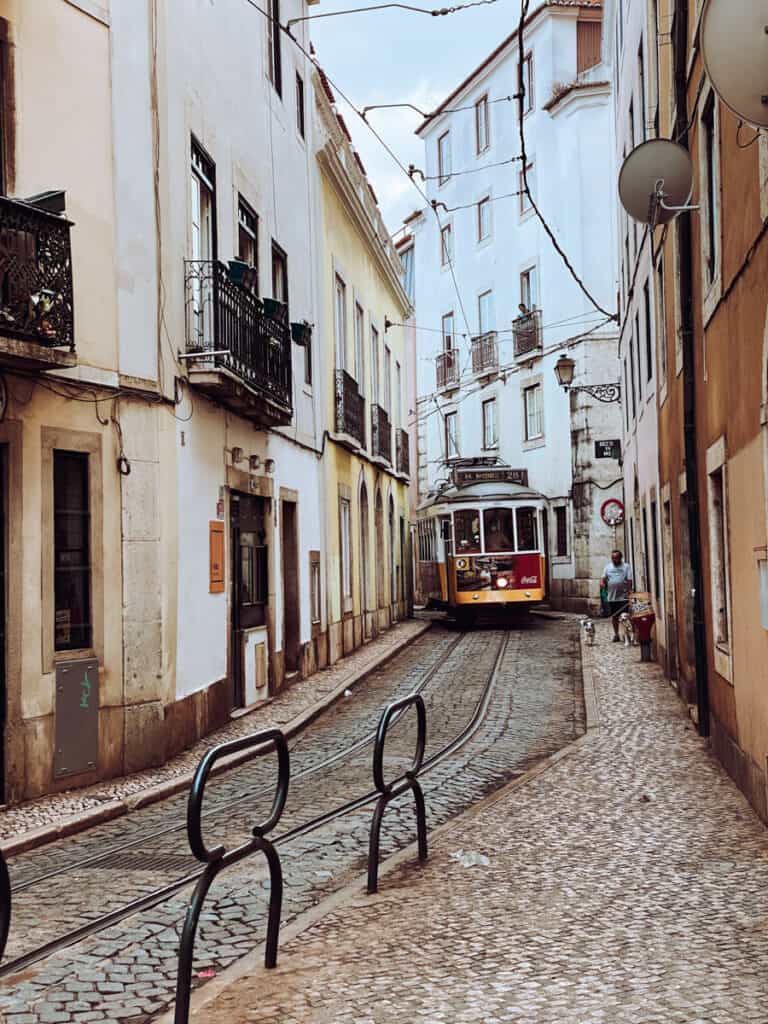

You might wait in line at Martim Moniz during the high season for over two hours! To avoid queues and enjoy a seat, you can ride with the Hills Red Tram Tour instead. Your ticket will be valid for 24 hours, with no crowds. Another way to avoid the crowds is by walking along the tracks. As a bonus, you can stop at all the beautiful things to do in Alfama and take pictures! Do you still want to ride a historic tram in Lisbon but with fewer people? Try tram 12, 15 or 18!
Costs for Tram 28: If you purchase a ticket on the tram, you pay the highest fee of € 3,00 per person for one ride. The 24-hour unlimited public transport ticket for € 6.80 will give you a much better value. You can buy these upfront at the metro station and not on the tram! If you have the Lisboa Card, you can ride the tram for free, as all public transport is included!
7. A dinner experience with Fado
Fado, the songs about Lisbon, Saudade (an intense longing, melancholy sadness) and tradition. In Alfama, Fado Houses are everywhere. And when you’re here, visiting a Fado show is highly recommended! After all, it is classified by UNESCO as World Heritage! And while you enjoy a delicious traditional Portuguese meal, you’ll listen to songs about Lisbon.
You’ll feel the songs, even when you don’t speak Portuguese! In most Fado houses, you’ll have to remain silent when they are singing and playing music. Discover the soul of Portugal in the songs and listen to the charismatic voices of the singers.
Where to watch Fado: LX Bohemia and A Baiuca are some of my favourites.
8. The Fado Museum
If you want to learn more about Fado, visit the Fado Museum on Largo do Chafariz de Dentro! Inside, you will learn more about the history of Fado music and Portuguese culture, and you will see the guitars from up close. Notice the unique guitar with six pairs of strings and a pear-shaped harmonic box!
The permanent exhibitions also contain more information about the rise of the Fado Houses. They will highlight famous Fado Singers such as Amália Rodrigues. The temporary exhibitions change every few months.


Extra info: The Fado Museum is located on Largo do Chafariz de Dentro 1. Entrance is € 5,00 per person and is open from Tuesday to Sunday, from 10 AM to 6 PM. You need 30-60 minutes to see the exhibitions.
9. Rua de São Tomé
On Rua de São Tomé, you’ll spot a unique artwork on the cobblestones. Lisbon-based artist Vhils created this work, a tribute to the Fado singer Amália Rodrigues. Amália da Piedade Rebordão Rodrigues is known as the Queen of Fado and the Lisbon born singer died in 1999. Vhils created an extraordinary piece in Lisbon’s traditional pavement (Calçada Portuguesa) style. The title of the artwork is Calçada, meaning pavement.


Behind Vhils’ art, you’ll spot a house that looks slightly different from the surroundings. Several buildings in Lisbon survived the earthquake, and many were destroyed. The oldest house is the house on Rua dos Cegos. The house is over 500 years old!
10. Get lost in the maze of tiny streets!
The famous sights in the Alfama area are worth visiting, but nothing beats exploring the maze of tiny streets. Experience Alfama like a local, dive into the charm of Portugal and discover the different architectural styles of the buildings. The best way is to take the many side streets in the Alfama area.
You might get lost, but that is ok! The area between the Fado Museum and Portas do Sol especially has many narrow, cobbled streets. Often without big groups of tourists! You will enjoy a strong sense of what life in Portugal is all about.



Hire a photographer in Alfama!
Did you know I work as a photographer in Lisbon? And one of my favourite photography grounds is Alfama Lisbon! As a resident, I know many hidden spots and know my way through the cobbled streets! When you visit Alfama, having long-term memories of your time in Lisbon is fantastic. The Alfama neighborhood creates a beautiful background with azulejo tiles, colourful houses and viewpoints.



Besides, the photography experience with me is partially a walking tour, so you can see many stunning places in the area! A photoshoot in Alfama takes 30 to 90 minutes, and prices start at € 100,00. This experience is great for solo travellers, families and couples! Learn more about photo shoots in Lisbon, or contact me to book! I would be delighted to capture you in this beautiful city!
Would you like to be photographed in Alfama?
Book me as your photographer in the tiny streets of Alfama! As a local, I know all the ins and outs of the best photography locations in Alfama. Click here to read more and to see more examples!
Bonus tips
- Have a walk around Igreja de Santo Estêvão. It is often quieter, and the views over the Tagus River are stunning.
- Do you see someone selling Ginjinja? Try one! This cherry liquor is usually served in a chocolate cup, and you can drink it on the go.
- To know more about Portugal’s political history, look at the Aljube Museum. It’s located in a former prison, and you’ll learn more about the fascist regime, Portuguese colonies and censorship.
- Find the History of Lisbon Mural by Nuno Saraiva.
- Discover Casa dos Bicos, where you can find the José Saramago Foundation. Casa dos Bicos is mostly known for its beautiful façade.
- On Rua de São Memede, you can find a Roman Theater that once had space for 4.000 spectators.
- Another Vhils art piece can be found on Tv. Merceeiras. If you like street art, this is definitely worth a look!
- The oldest museum in Lisbon is the Military Museum, which is not often visited. The museum, however, boasts an impressive collection of artillery and swords, and you’ll learn more about the historical battles.
- Discover the former fountain in front of the former palace Chafariz d’El-Rei.
- The Azulejo Museum is close to Alfama and well worth the detour.
Nearby sights that are officially not in Alfama
The Lisbon flea market
Every Tuesday and Saturday, Campo de Santa Clara, in front of the National Pantheon, changes into the hustle and bustle of market stalls. It is Feira de Ladra, the flea market in Alfama. When you’re looking for a bargain or a treasure amongst the “junk”, this is the place to be. The word ladra means a female thief and means thieves’ market. The original name of the flea market, however, was piolho ladro which means flea or bug.

Tip: Did you get hungry, and do you like mushrooms? Santa Clara dos Cogumelos is a tip-top restaurant with fantastic food and wine! Just like Feira da Ladra, it is located on Campo de Santa Clara.
National Pantheon
In 1682, the National Pantheon (Panteão Nacional.) was built, but then it was known as the Church of Santa Engrácia. It is Portugal’s first baroque monument, and the interior is covered in white marble. The construction of the National Pantheon took so long that the dome was only completed in 1966!


Since 1916, it has been known as the National Pantheon, and inside, you’ll find an octagonal floor plan. Here, you’ll discover tombs of well-known and influential cultural figures. Examples are Fado singer Amália Rodrigues, author Almeida Garrett and general Humberto Delgado. There is also an empty tomb, a cenotaph for famous personalities such as Vasco da Gama, Henry the Navigator, Luís de Camões, and more!
Travel tips: The National Pantheon is reached by tram 28. As this might be busy, you can take the Blue Metro or a bus to Santa Apolónia. It’s a short but steep walk up to the Panteão Nacional.
São Vicente de Fora
The Monastery was built between the 16th and 18th centuries, and it is the place where the kings of the House of Bragança are buried. You can find the marble tomb in the ancient cistern, and both Catherine of Bragança and Carlos I (the next-to-last king of Portugal) are buried here.


The Monastery is dedicated to São Vicente, and inside, you’ll find a unique collection of decorative tiles. The highlights are 38 panels which contain the fables of La Fontaine. Don’t forget to visit the rooftop for a stunning view over Alfama! São Vicente de Fora is next to the National Pantheon and Feira da Ladra.
Miradouro da Graça
Just behind Alfama, on top of another hill, you can find Miradouro da Graça. From this point, you overlook the castle and the western parts of Lisboa. In the background, you’ll spot the bridge Ponte 25 de Abril, Praça do Comércio and the Carmo Convent. During the day, the Convento da Graça is often open. Have a look inside and enjoy the quietness within the monastery walls.
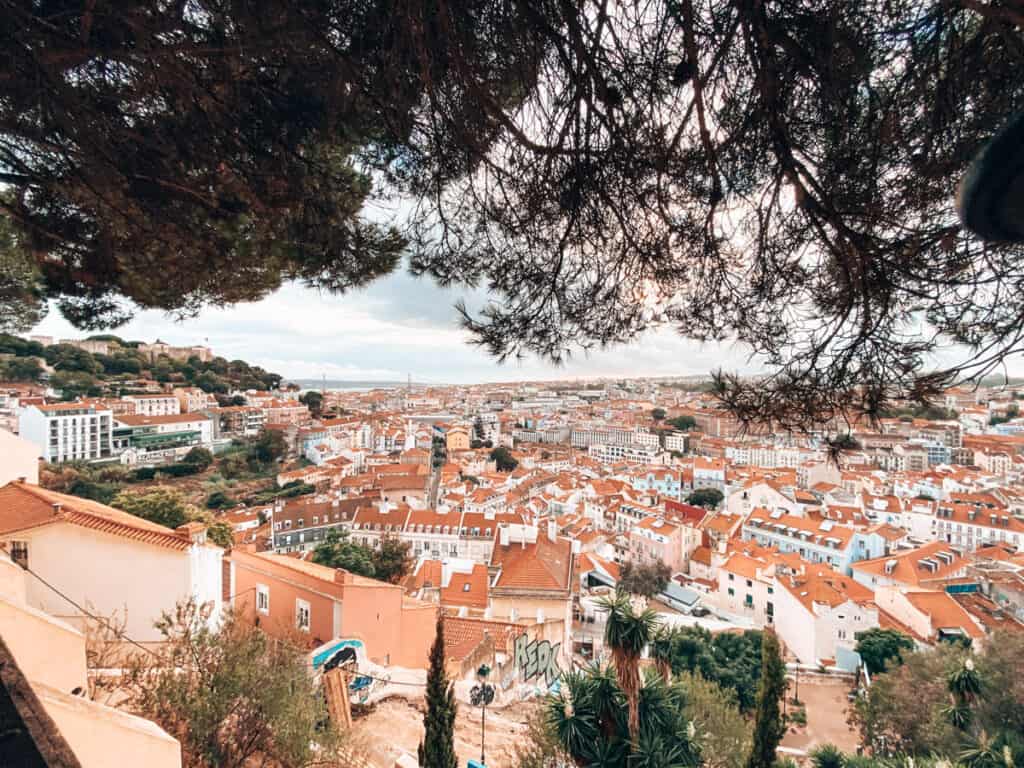

Miradouro da Graça is a popular place during sunset, so it can get very crowded! Hidden spot: walk around the convent and walk to Jardim da Cerca da Graça. This park is a lot quieter and a hangout spot for locals. From there, you can also walk further up to Miradouro da Senhora do Monte, the highest viewpoint in the city.
How to get to Alfama Lisbon
Alfama is easy to reach from wherever you are in Lisbon. You can take the Blue line to the metro stations Santa Apolónia and Terreiro do Paço. Both stations are at sea level, meaning you will walk uphill often. From downtown Lisbon, you can use several elevators and lifts free of charge. This guide includes all the areas where you can take lifts, including Alfama.
Bus 737 travels to the top of the hill in Alfama. From there, walking down and exploring this stunning part of the city is easier! Lastly, you can take a taxi, but some areas in Alfama are car-free. Bolt and Uber services cannot drive to these sections, but a regular taxi can.
Where to eat in Alfama
Alfama is relatively touristy, with plenty of tourist traps to eat in. My rule of thumb is that if someone tries to lure me in, I keep walking. As a local, I often eat in other neighbourhoods in Lisbon, but there are some lovely places to eat in Alfama! For example, Zunzum Gastrobar and ANFÍBIO offer contemporary Portuguese cuisine (reservations are needed in both restaurants). Here are some more favourites!
Favourite Places to eat in Alfama
Hotels in Alfama Lisbon
Alfama is one of the best neighbourhoods in Lisbon to stay! In between the narrow streets, you will find plenty of hotels. When travelling with lots of luggage, ensure you can reach your accommodation by taxi. Otherwise, you will be doing a lot of carrying on the hills! Some lovely hotels in Alfama are Alfama Vintage Studio Apartment, the Editory Riverside, Chafariz Del Rei (in a former palace!), and São Vicente Alfama Hotel by TRIUS Hotels. You can find all the hotels and accommodations on the map below!

FAQ
Conclusion
I hope this local guide of Alfama will help you find all the famous sights and some hidden gems. Whether you want to see churches like Igreja de Santo António and Igreja de São Miguel, or the famous castle and the viewpoints, there are sights for everyone! What do you think your favourite part of Alfama Lisbon will be? Let me know in the comments! You can easily spend a few days in this district alone, and at minimum, a day trip will be unforgettable!



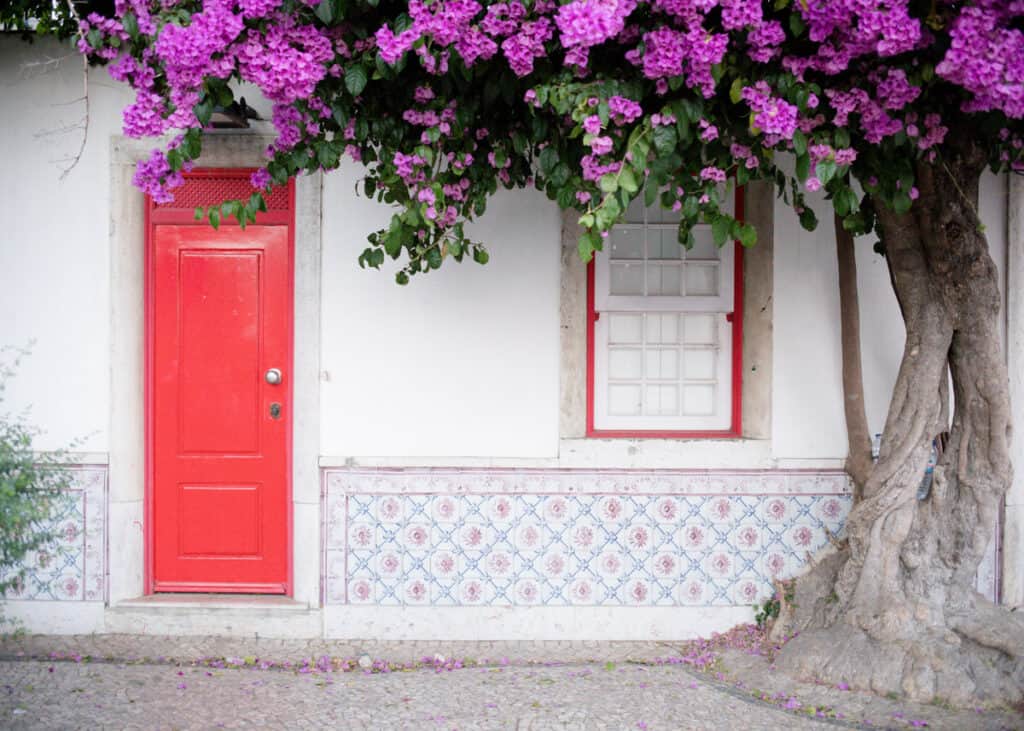




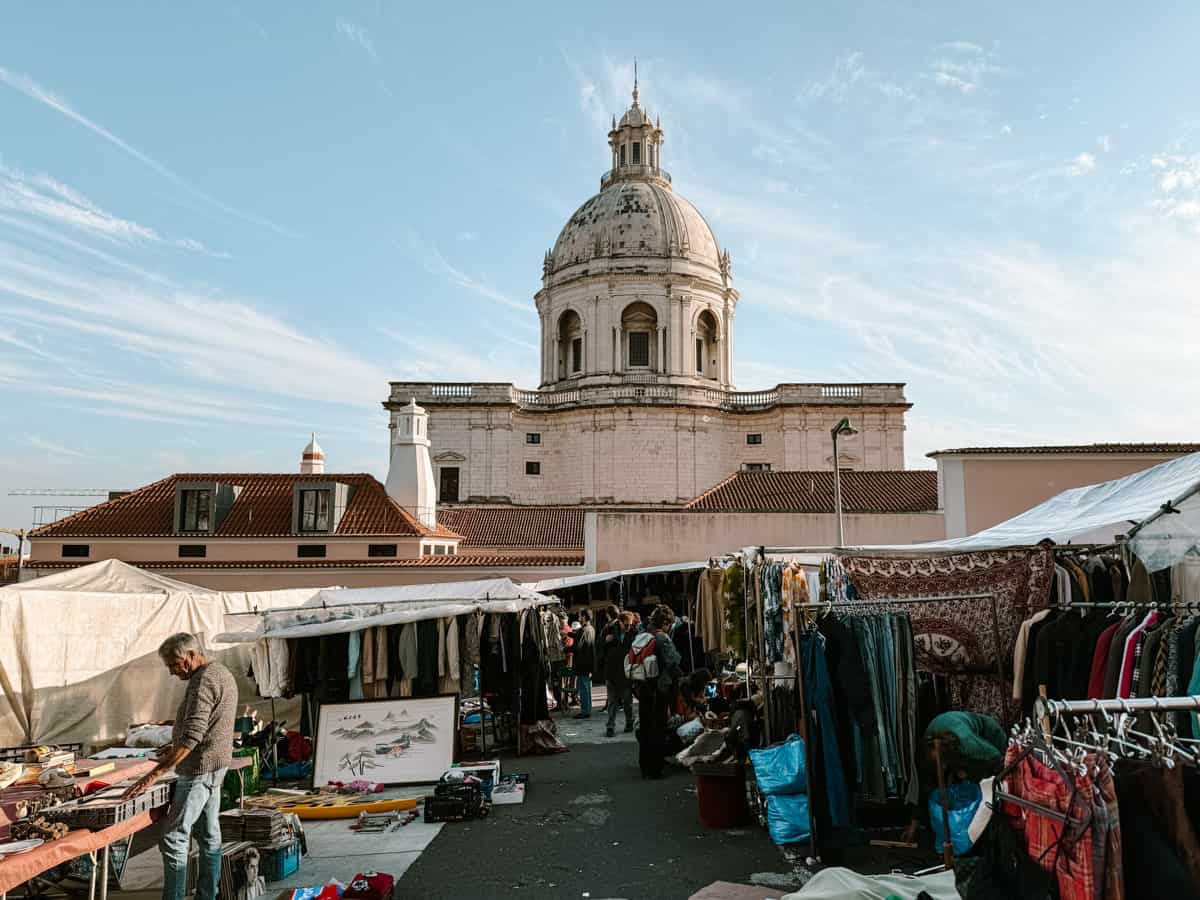

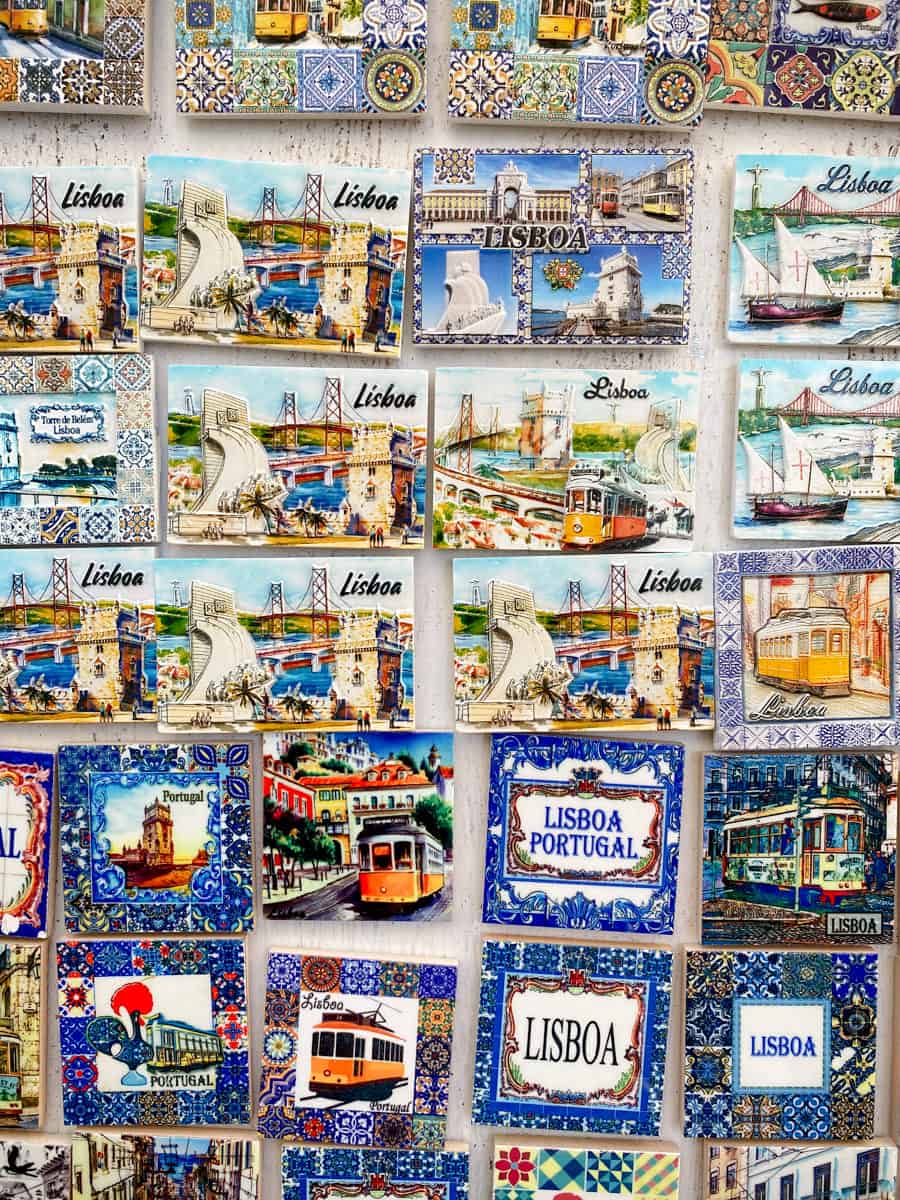
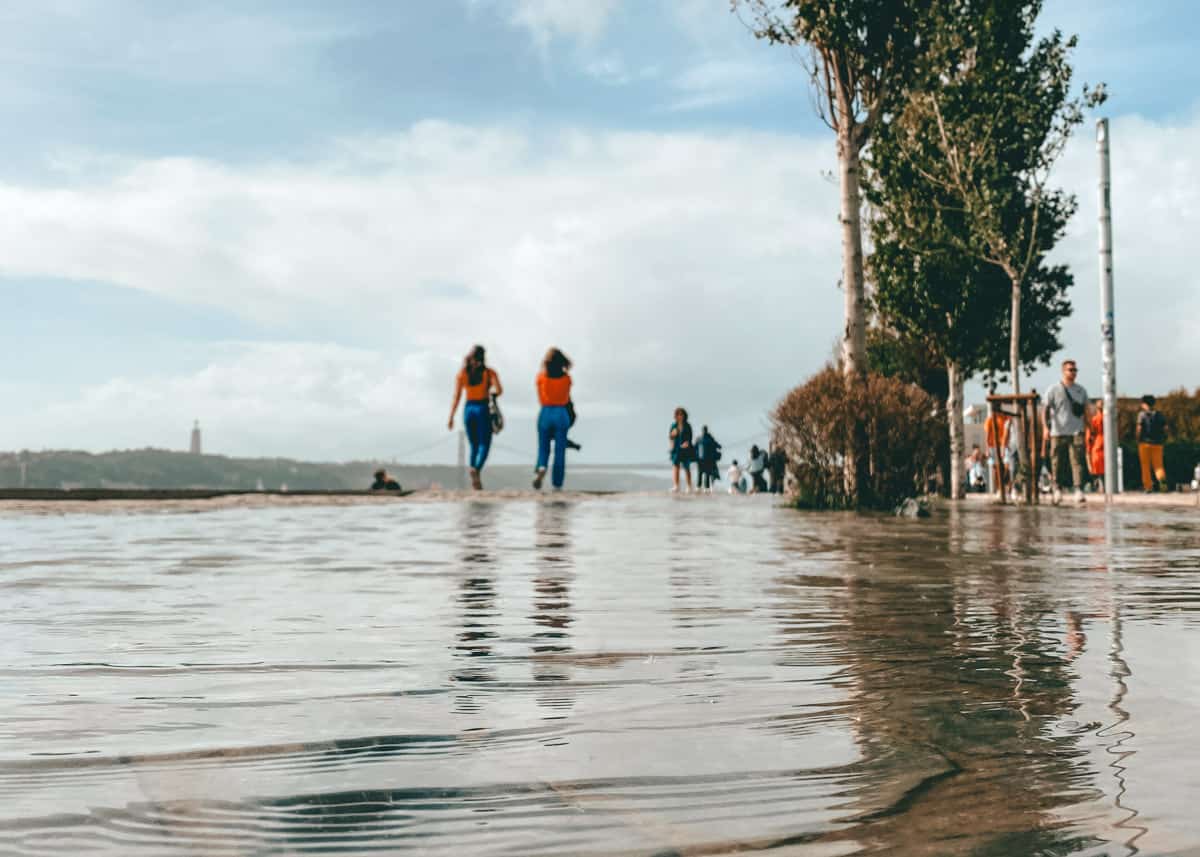


This was a great write up on Alfama. Very informative … I didn’t know about the National Pantheon which is now on my list . And must say… great pics.
I’m sure you will love Alfama! Let me know if you have any questions when you’re in Lisbon!
Alfama looks absolutely stunning, I can’t believe I’d never heard of it before! Thank you for sharing – will definitely be adding it to my list.
That is great to hear Leah, I hope you have a fantastic time when you visit Lisbon!
Portugal is so pretty! I need to visit this country one day
I hope you get to come over someday!
There is some lovely architecture in this city, and I love the art and the azulejo tiles!
Sure thing! I keep being mesmerised by all its beauty!
We fly out from Australia tomorrow to Portugal for 3 weeks. I can’t wait! My husband is a surfer and we are very much looking forward to staying in Lisbon, Ericiera, Porto and Lagos. Thank you for your information and travel tips. I have made lots of notes from your recommendations.
Thank sounds amazing Belinda! Have the best of times and I´m happy the site helped you with your planning!